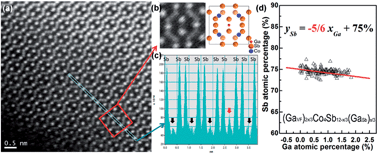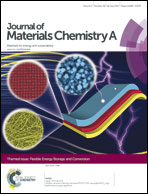Electrical properties and microcosmic study on compound defects in Ga-containing thermoelectric skutterudites
Abstract
Group 13 elements, such as Ga, In, and Tl, in skutterudite caged compounds show many differences compared with normal metal fillers. The charge-compensated compound defect (CCCD) model has been proposed recently to explain the abnormal behavior in thermodynamics and thermoelectric transports for Ga/In-containing skutterudites. Partial evidence from the macroscopic perspective has been given to support the CCCD model by using X-ray diffraction and statistical electron micro-probe analysis. In this work we have undertaken a systematic study on Ga-containing skutterudites from the microscopic perspective based on scanning electron microscopy (SEM) and transmission electron microscopy (TEM). Interestingly, microscopic study gives similar results and conclusions to macroscopic analysis, such as the solubility and dual-site occupancy of Ga in skutterudites. These abnormal dual-site compound defects lead to unusual covalent bonds, instead of ionic bonds between filler-Ga and the neighboring Sb/Ga atoms, which makes the carrier concentrations and mobilities significantly different from those of normal fillers. The unusual character of Ga in skutterudites provides an extra possible method to tune the thermoelectric properties in skutterudites, in addition to those approaches used for normal fillers.

- This article is part of the themed collections: 2014 Journal of Materials Chemistry A Hot Articles and Flexible energy storage and conversion

 Please wait while we load your content...
Please wait while we load your content...